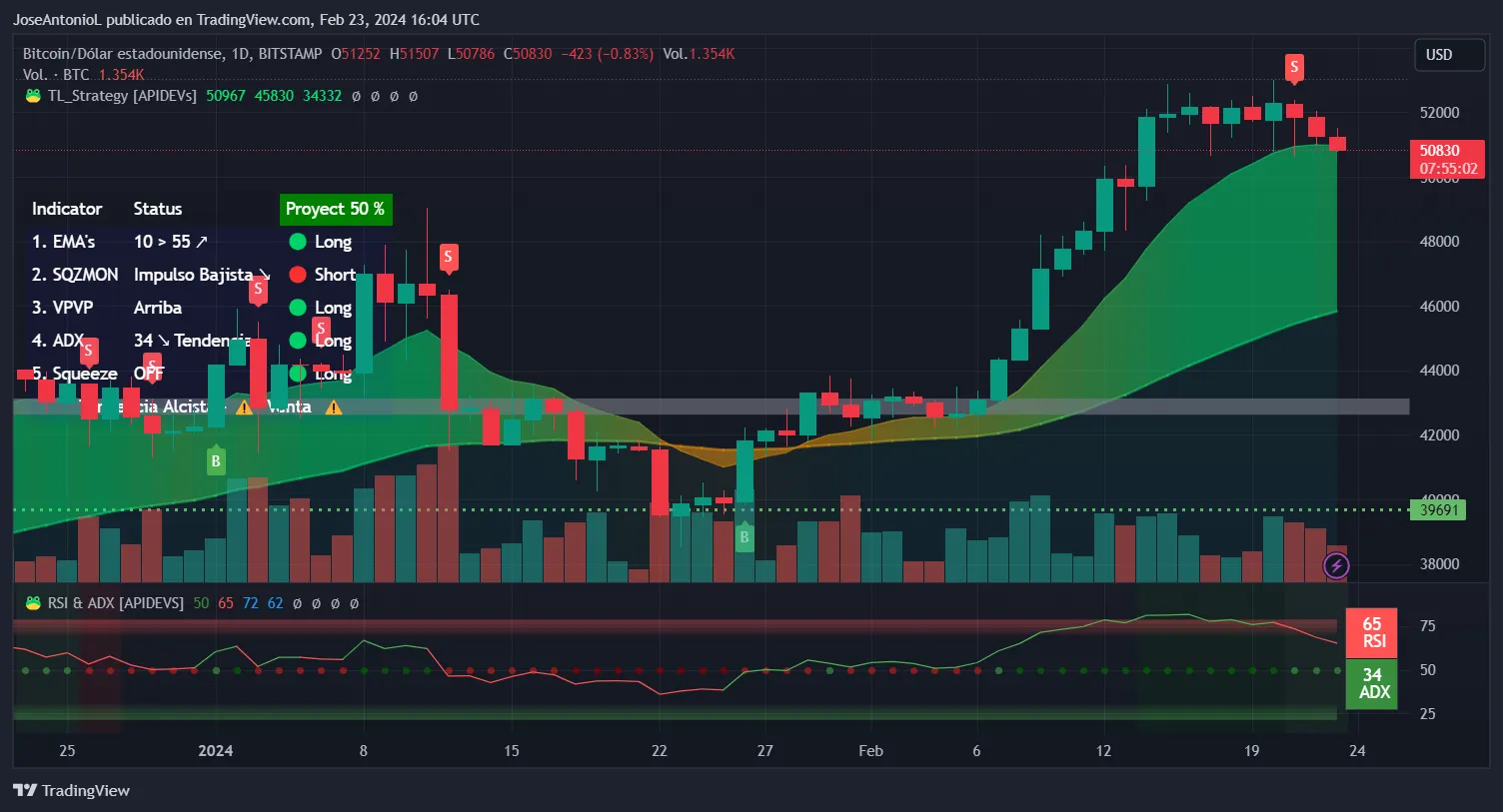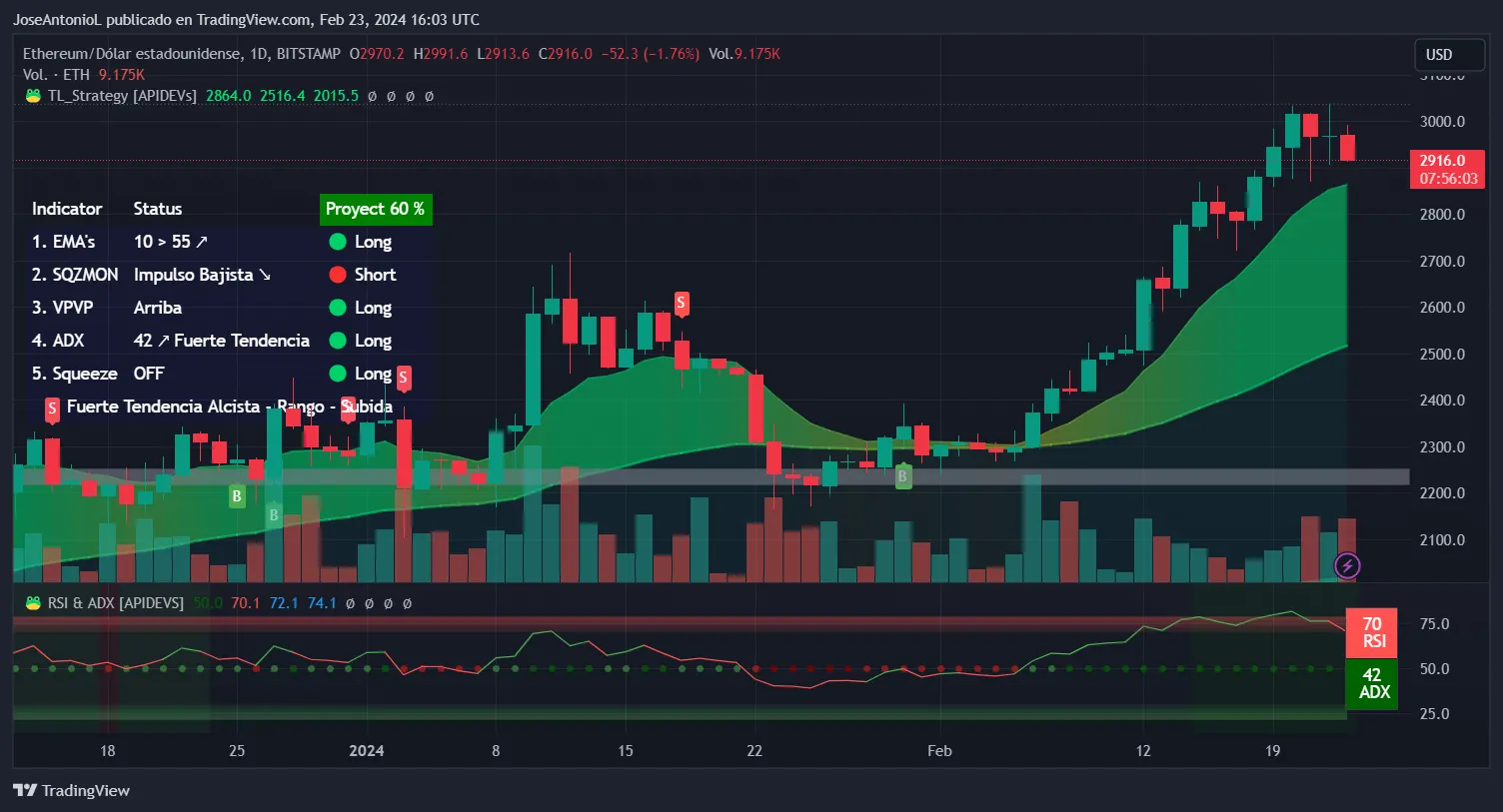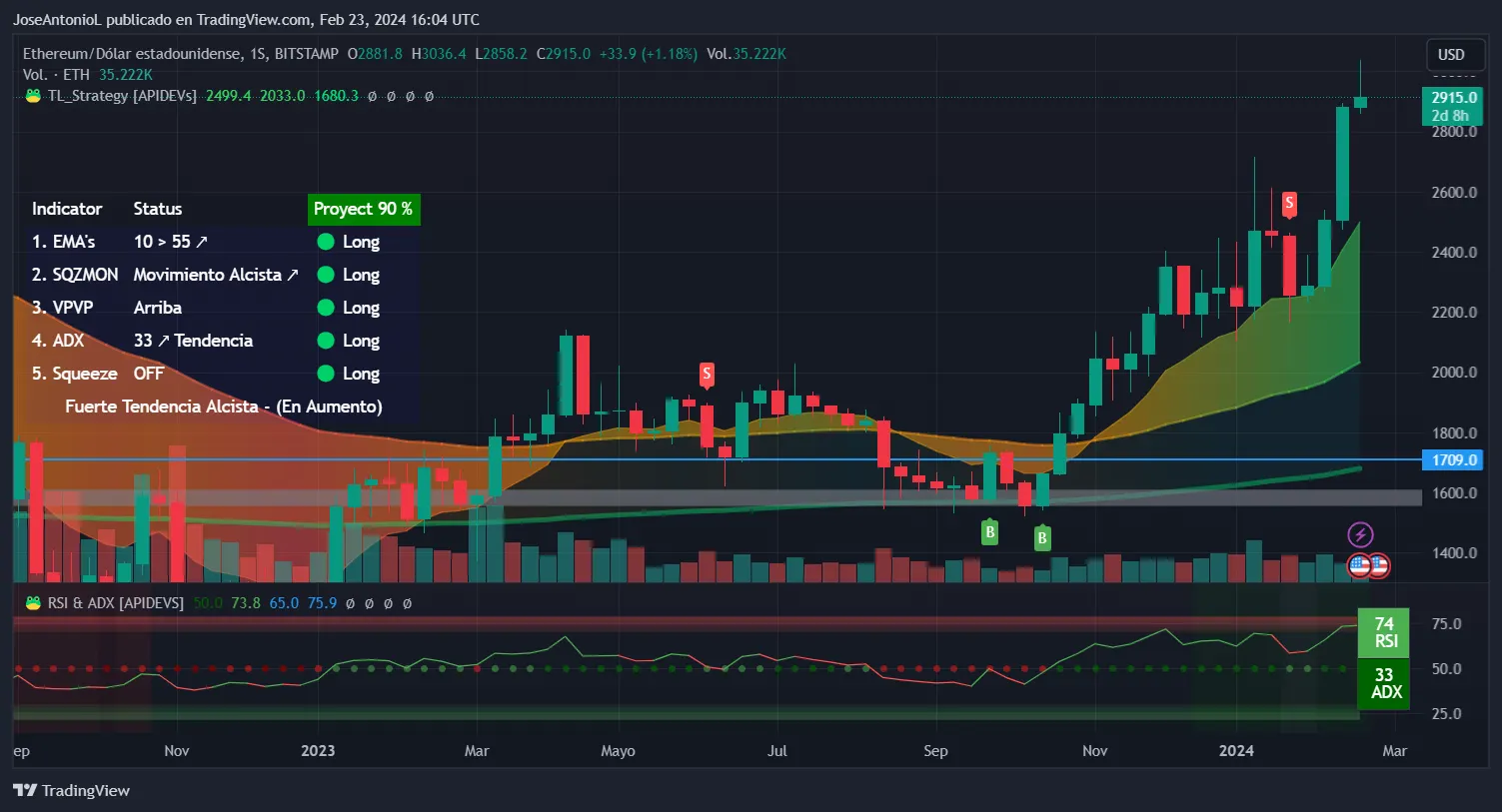After a month of bullish activity, the broader cryptocurrency market is settling as the week draws to a close. Major currencies like Bitcoin and Ethereum are trading relatively flat, reflecting a pause in recent upward momentum.
Artificial intelligence-linked tokens are still going strong, however, buoyed by the current momentum within the AI industry, which is sparking increased investor interest and activity in related digital assets. Indeed, after Nvidia’s blockbuster earnings report this week, tradfi stocks related to AI tech are all on the rise.
Bitcoin’s current market position

Bitcoin opened the day at $51,252 but slightly decreased to around $51,134, marking just short of a 1% drop within the last 24 hours. This movement underscores a trading sideways period consistent since February 15, as Decrypt previously reported.
The cryptocurrency’s current position below its EMA10 mark (the average price of the last 10 days) raises concerns about a strong correction. Closing the day under this critical threshold could suggest that bearish forces are gaining a foothold in the market.
Some market indicators signal that a correction might already be underway.
The RSI—an indicator that measures the strength of bulls over bears in a market—was previously at an exceptionally high 80 points (meaning 8 out of every 10 traders were buying), but has decreased to 66 points. Although still high, this reduction suggests a shift towards a more balanced market dynamic and shows that traders are not as crazy about BTC as they were just a few days ago.
The convergence of Bitcoin’s EMA10 and EMA55 points to a narrowing gap between short-term and long-term buying performance. This trend suggests a cooling off, where recent buyers (who bought BTC during the last 10 days) are not seeing the same returns as those who entered the market earlier (in the last 55 days). It also explains why the RSI is also dropping.
If this correction continues and the EMA55 crosses above the EMA10, it could mean that the correction may be turning into a bearish trend that leaves newer buyers facing losses.
The current market is weighing the potential impacts of recent spot ETF approvals and the upcoming Bitcoin halving. The halving has historically influenced Bitcoin’s value, sparking a major bull run every four years, and could play a significant role in shaping future market trends.
Ethereum’s market dynamics
Ethereum opened the day at $2,970 but has experienced a 1.4% drop, with its price adjusting to $2,947 by the time of this report. This movement reflects a stronger intra-day decline compared to Bitcoin.
Despite a stronger bullish trend earlier, Ethereum has not maintained its momentum this week. The appearance of a Doji candlestick in yesterday’s trading session indicates a potential shift in market dynamics.

The Doji descriptor is used when a candlestick is flat and has no body—in other words, the price doesn’t move during the session. Yesterday, ETH started the day at $2,967 and ended at $2,968, signaling indecision among traders.
This pattern indicates a balance between buyers and sellers, with neither side gaining significant ground, and suggests that Ethereum’s dominant bullish trend may be weakening.
Ethereum’s weekly performance remains positive, though, with a 6% gain over the last seven days. However, this growth is modest compared to the substantial increases seen in previous weeks. Last week, it spiked 14.89%.
The observed deceleration in Ethereum’s value growth suggests a potential for minor corrections. These adjustments may be influenced by Bitcoin’s market movements, as altcoins often follow the lead of the flagship cryptocurrency.
For long-term Ethereum holders, the current market conditions still present a bullish outlook. Despite the potential for short-term corrections, the overall trend supports holding onto the coin—for now.

Disclaimer
The views and opinions expressed by the author are for informational purposes only and do not constitute financial, investment, or other advice.

